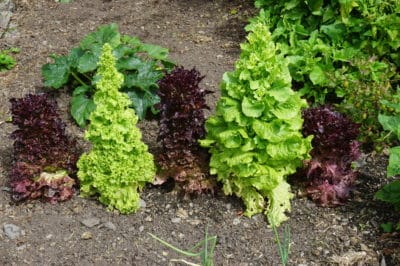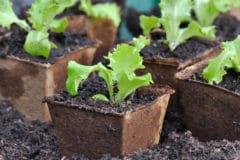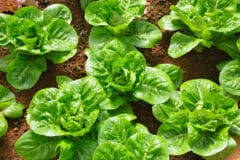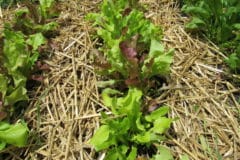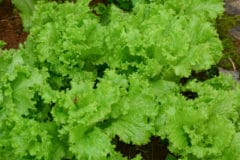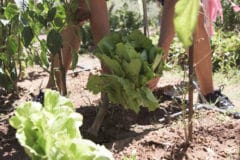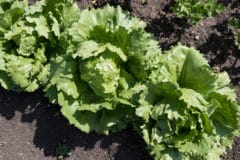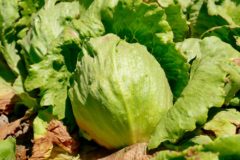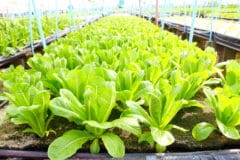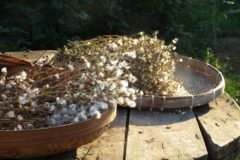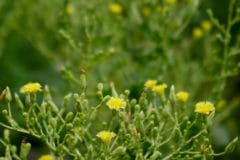Causes
Lettuce Plants will bolt for a variety of reasons. Understanding what triggers the plant to flower aids us in keeping it in a vegetative state for longer.
Temperature
Lettuce plants will naturally begin to flower when the temperature gets too warm. When the weather consistently reaches 75°F/23°C many lettuce varieties will send up a flowering shoot. There are cultivars that are touted as ‘bolt resistant’ and ‘summer season’ crops. Often heirloom varieties also carry these characteristics, so experiment to see what works for you.
Sunlight
Because lettuce is a cool season vegetable, long sunny days aren’t always desirable. It prefers the cooler, shorter days of spring or autumn. Plants exposed to too much sunlight will frequently bolt. Crispheads like iceberg and Romaine are slower to bolt in the sun than loose leaf varieties.
Pest Damage
A plant that senses impending death due to too much pest damage will bolt. Often a lettuce seedling that’s eaten all the way to the ground will grow back, but sometimes it’s too much. Slug and snails return night after night, consistently stressing out plants until they start to flower.
Solutions
Follow these solutions to keep your lettuce from bolting.
Plant early (or late)
In warmer climate zones it is especially important to give lettuce plants a head start indoors 3-4 weeks before the last frost. Get them in as early as possible in order to harvest before the heat of summer. If that proves difficult in your region, consider an autumn lettuce crop instead. Often the warmth is beneficial during germination, and then the cooler temperatures set in as the plant matures.
Provide Shade
Lettuce plants that are shaded during the heat of the day are less likely to bolt. Planting them amidst tallercompanions like tomatoes or brassicas is beneficial. The seedlings get light early in the season and then receive shade as the taller plants grow and the weather warms. Alternatives to companion planting would include shade cloth or selecting a site with dappled lighting.
Deter Pests
In cooler climates, slugs are a problem for lettuce in the garden. There are organic slug bates that will reduce slug population. Other more natural solutions include allowing ducks to patrol the area and the mulch prior to planting. Or, consider making a snake habitat inside the garden. Snakes love eating pests like snails and slugs.
You can also make an organic beer slug bait.
- Pour stale beer into a plastic container that is approximately 2-inches tall.
- Place the container near your lettuce plants, burying it halfway into the soil.
- The slugs will be attracted to the beer and fall in drown.
- Replace the beer every few days.
If at first unsuccessful, try again and try something new. Finding the right varieties for your garden is key to preventing bolt. If you walk the garden each day and visually assess your plants for stress, you’ll be able to fix the issue before it affects their growth cycle.
